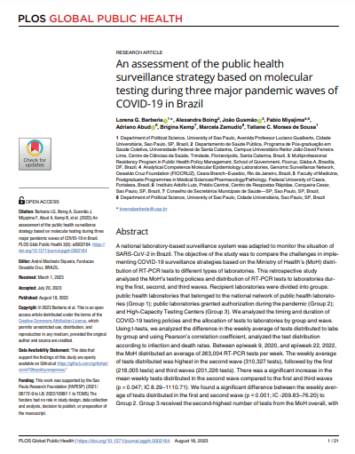Abstract
A national laboratory-based surveillance system was adapted to monitor the situation of SARS-CoV-2 in Brazil. The objective of the study was to compare the challenges in implementing COVID-19 surveillance strategies based on the Ministry of Health’s (MoH) distribution of RT-PCR tests to different types of laboratories. This retrospective study analyzed the MoH’s testing policies and distribution of RT-PCR tests to laboratories during the first, second, and third waves. Recipient laboratories were divided into groups: public health laboratories that belonged to the national network of public health laboratories (Group 1); public laboratories granted authorization during the pandemic (Group 2); and High-Capacity Testing Centers (Group 3). We analyzed the timing and duration of COVID-19 testing policies and the allocation of tests to laboratories by group and wave. Using t-tests, we analyzed the difference in the weekly average of tests distributed to labs by group and using Pearson’s correlation coefficient, analyzed the test distribution according to infection and death rates. Between epiweek 9, 2020, and epiweek 22, 2022, the MoH distributed an average of 263,004 RT-PCR tests per week. The weekly average of tests distributed was highest in the second wave (310,327 tests), followed by the first (218,005 tests) and third waves (201,226 tests). There was a significant increase in the mean weekly tests distributed in the second wave compared to the first and third waves (p = 0.047; IC 8.29–1110.71). We found a significant difference between the weekly average of tests distributed in the first and second wave (p < 0.001; IC -209.83–76.20) to Group 2. Group 3 received the second-highest number of tests from the MoH overall, with a reduction during the third wave to first-wave levels. The distribution of RT-PCR tests was not correlated with the case and death incidence.


